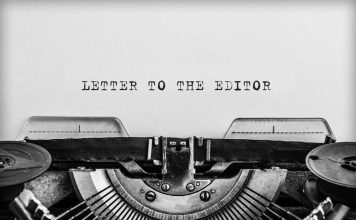You might say both John Fry and Irv Perch know how to dream big.
And there’s a sense of symmetry in the fact that the two men’s
dreams happen to coincide exactly on the same piece of South Valley
real estate.
You might say both John Fry and Irv Perch know how to dream big. And there’s a sense of symmetry in the fact that the two men’s dreams happen to coincide exactly on the same piece of South Valley real estate.
The owner of the Fry’s Electronics chain, Fry has long dreamed of building a math mansion in the foothills east of San Martin. At 160,000 square feet, this project will serve as the headquarters for the American Institute of Mathematics when it’s completed in 2009.
On May 31, I was one of more than 300 guests who watched local dignitaries push shovel blades into dirt at the $50 million castle’s ground-breaking ceremony. I chatted with a few folks who well remember the Flying Lady restaurant that once stood on the future building’s site. And that brings us to Irv Perch’s dream.
Perch made his fortune in the recreational vehicle business. In the 1960s, he founded the largest manufacturer of RVs in the world. His Aristocrat Travel Trailers built its best-selling vehicles in Morgan Hill and Indiana. And helping him to earn a prestigious spot in the RV Hall of Fame in Elkhart, Ind., Perch won acclaim by inventing the fold-away gaucho bed and the RV potty drawer.
But in the South Valley, his real claim to fame was his eatery that many locals still recall. Fry’s temple to trigonometry will be terrific, but no diner who ate there will ever forget Perch’s beloved Flying Lady.
The other day, I chatted on the phone with Julie Belanger, Perch’s daughter. “It was his dream to have the world’s largest restaurant,” she told me. “He loved the restaurant business.”
Perch’s big dream began in the early 1970s with the idea of creating a family-oriented RV park called Hill Country. The 200-acre enterprise featured a golf course, a museum of antique aircraft and cars, an airplane landing strip, a gift shop, RV spaces and a restaurant that sat 187 people. He named the restaurant “The Flying Lady” after his wife Jan, an airplane pilot. Ironically, Perch’s spouse didn’t like being in the restaurant business, Belanger said.
But the restaurant bug bit Perch. He decided to expand his eatery. After four years work and $4 million spent, in 1981 he opened up the Flying Lady II. It was the talk of the South Valley. At 9,700 square feet covering three floors, Perch’s culinary castle could seat up to 2,350 persons. A live band played Dixieland music in the upstairs bar on weekends.
Seven full-sized antique aircraft hung from the rafters, Belanger told me. And hundreds of radio controlled-sized planes buzzed over diners on a modified dry-cleaner rack attached to the ceiling.
“It took about 10 or 15 minutes to make a full circle, so you had a lot of airplanes to watch,” she recalls. “The food was very good and the price was right. It was an enjoyable place to bring your family and eat and enjoy the view.”
Perch used his Morgan Hill factory workers to help out by making the furniture, light fixtures and ornamental wrought iron. And an artist carved out redwood statues of famous entertainers.
Cooks prepared meals in a 5,000-square-foot kitchen, with an additional 3,000 square feet for refrigerator and freezer space.
The dinner menu offered 13 entrees such as chicken livers and bacon, filet mignon and New York steak. The delicious cuisine and fun ambiance brought guests back for more. Sunday brunches were always popular – especially on Mother’s Day – and despite the restaurant’s colossal size, Flying Lady patrons sometimes had to wait two or three hours before getting a table. They spent the time strolling the antique museum or enjoying the panoramic view of the valley.
The Perch family closed the restaurant in 1994. Fry bought the property shortly after. A couple of years ago, workers tore the Flying Lady building down to make way for the future math palace. Belanger said her family didn’t feel sad.
“I said goodbye in 1994 and we moved on,” she told me. “It’s a beautiful piece of property. John Fry is putting in his dream. It’s his turn now.”
Indeed, Fry is making his own dream a reality. And when it’s completed in a couple of years, his calculus castle will be a world-renown architectural icon right here in the South Valley. Irv Perch, however, can say he got there first … with his famous Flying Lady.












